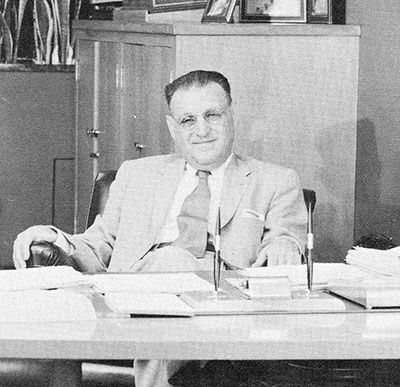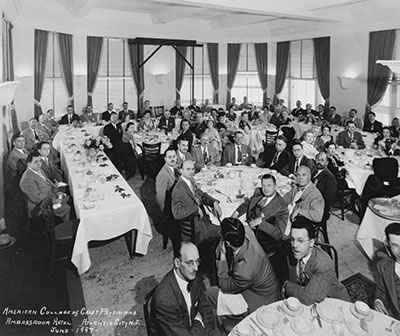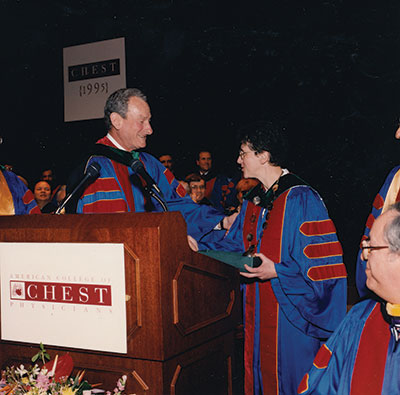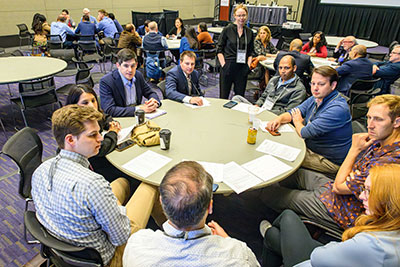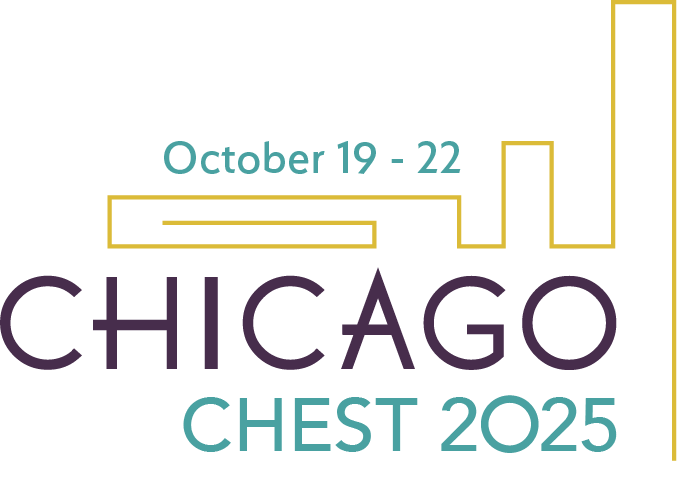The role of education is overwhelmingly important to the history of CHEST, according to CHEST Past President Deborah Shure, MD, Master FCCP.
“Everything springs from education,” she said.
This approach has defined CHEST for nine decades, beginning with the founding years—when TB education transformed the life of one Murray Kornfeld.
The TB years
In the parlance of his day, Murray Kornfeld was a “go-getter,” a dynamic manager in a New York export-import firm before he turned 25. So, in 1917, when Kornfeld contracted pulmonary TB, he had no patience for an illness that was treated at the time through isolated convalescence.
After only six months of rest, Kornfeld resumed traveling through South America and reaching potential business partners via ship, railroad, and mule.
When a second bout of TB struck in 1923, Kornfeld reported to a sanatorium for a short rest. But the disease had a different timetable—one that demanded six years.
Being sidelined from his adventurous life transformed Kornfeld and his understanding of the disease. He came to believe that physicians were misdiagnosing TB but could vastly improve treatment outcomes if they had the means to access more knowledge.
By 1935, Kornfeld had gathered a group of physicians to form the Federation of American Sanatoria, the precursor to the American College of Chest Physicians. He had also published Diseases of the Chest, the precursor to the journal CHEST®.
Ten years later, the organization had 24 chapters and 1,766 members.
Post-war expansion
As vaccines, anti-TB drugs, and testing improved patient outcomes, the journal expanded its focus to consider issues such as allergic, occupational, suppurative, and neoplastic chest diseases, as well as medical economics.
By the early 1950s, Diseases of the Chest began to devote nearly one-third of its pages to conditions other than TB. It continued this expanded approach through 1970, when it was renamed to CHEST.
The organization grew as well. By 1985, it had grown to approximately 14,000 members and preparations were made for a grand 50th anniversary gathering in New Orleans featuring an address by outgoing Past President Dick Briggs Jr, MD, Master FCCP.
Keeping people up to date
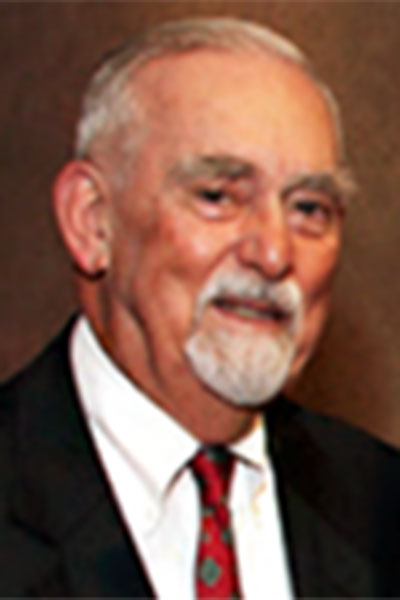
In 1968, after two years in the US Air Force and completing his medical residency, Dr. Briggs accepted a position as professor at the University of Alabama at Birmingham School of Medicine, where he would teach and treat patients his entire professional career.
Dr. Briggs’ dual commitment to education and clinical practice reflects what he sees as CHEST’s greatest strength.
“In my opinion, the continuing education of physicians who are already trained as internists and pulmonary specialists is the major impact of the American College of Chest Physicians,” Dr. Briggs said.
As an example, Dr. Briggs pointed to the role that CHEST played in educating clinicians about the transformative power of ventilators and in establishing critical care as a key subfield of respiratory and pulmonary medicine.
“Over the years, the American College of Chest Physicians, and the journal it has produced, helped to keep people who were interested in lung disease—and dealing with lung disease every day—up to date with the latest information about what was working and what wasn’t working,” Dr. Briggs said. “It has also helped prepare members for pulmonary and critical care medicine [board exams], and it has done this while remaining focused on people.”
Paying it forward
In the late ’70s and early ’80s, Dr. Shure was a fellow at the University of California, San Diego, conducting research on a new bronchoscopic technique for obtaining lung tissue using fine-needle aspiration. When she presented a paper on her research, she was approached by CHEST Editor in Chief Alfred Soffer, MD, Master FCCP, who said: “You need to be a part of the College.”
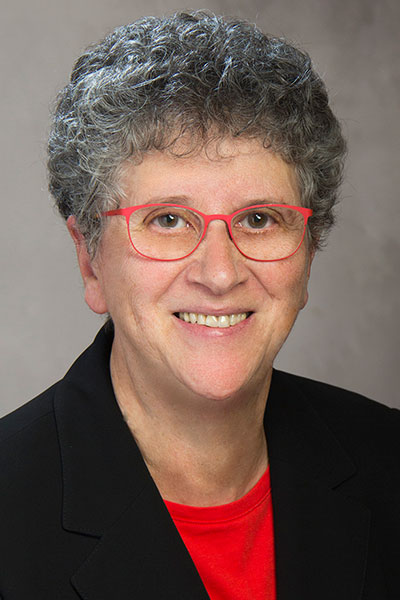
This was Dr. Shure’s introduction to the American College of Chest Physicians and what she characterizes as a family of professionals who share goals of improving medical knowledge and supporting one another’s efforts.
The warm welcome was even more significant, Dr. Shure said, given how few women were involved in the field and how difficult it was to be part of a minority group in the profession. During her term as CHEST’s first female President from 1995 to 1996, Dr. Shure was approached by junior members, international members, and members of diverse backgrounds who told her how important it was to see her in the position. Throughout her presidency, she strove to fully integrate international members into positions of leadership. In turn, they provided key insights and leadership for important CHEST initiatives, such as the global fight against tobacco smoking.
To this day, the international character of CHEST strengthens the organization’s core educational mission by drawing on the experiences of different clinical practices from around the globe, Dr. Shure noted. “Education, clinical education, and the education of how we can work together—that’s all part of it,” she said.
From saving lives to changing lives
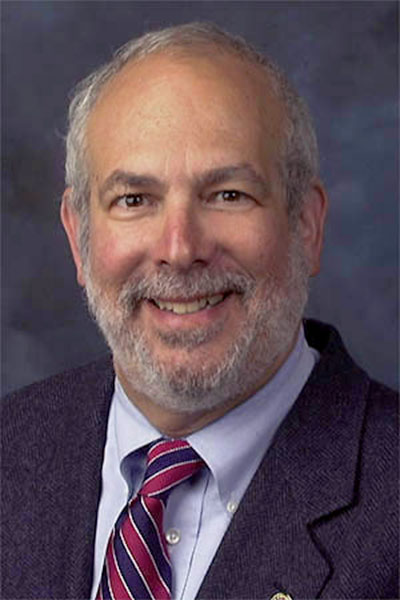
Allen I. Goldberg, MD, MBA, Master FCCP, was introduced to CHEST in the early 1980s. This initial affiliation reinforced two important lessons Dr. Goldberg received from his mentor, Surgeon General C. Everett Koop, MD, ScD, FCCP (Hon). The first was to join organizations and surround yourself with talented, experienced people to effect change. The second was to always pursue more education.
Through CHEST, Dr. Goldberg said he encountered “a loving and supportive culture—a family,” as well as immense support from his mentors within the organization, which included Dr. Shure, Bart Chernow, MD, Master FCCP, and Robert McCaffree, MD, Master FCCP. In 1995, Dr. Goldberg became the organization’s Treasurer and began what he described as “five of the most amazing years of my life,” which included his term as President from 1998 to 1999.
CHEST was already one of the world’s leading medical education organizations, Dr. Goldberg said. But the creation of the CHEST Foundation (now CHEST philanthropy) became “a tipping point” that would bring the findings of academic and clinical research into communities across the globe through impactful, science-based programs.
Preparing for the future
Noting that CHEST has been immensely successful in uniting professionals across the globe, Dr. Goldberg urged the organization to apply this cross-cultural expertise to educational programs bridging differences within the US, such as the rural-urban divide. He would also like CHEST to consider offering certifications or educational programs in health care management so that clinicians could better navigate “the cultural difference between medicine and management.”
Thinking more broadly, Dr. Shure said mistrust in and hostility toward science is a global phenomenon and might require a global answer. Trust in the expertise and connections that organizations such as CHEST have built could help counter this trend, she said.
“I like to think there is always hope,” Dr. Shure said. “I think the bottom line is that we have this sense of family and community—of supporting one another—and we have this vision of an expanded family, a worldwide family. We are all in the same boat, and we are all paddling.”
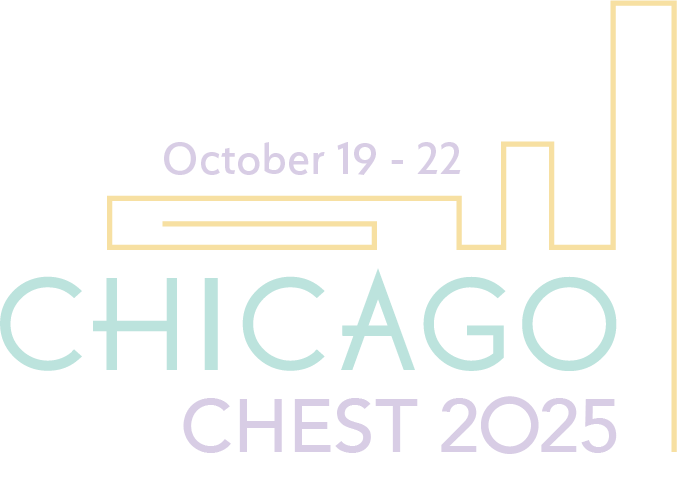
Download the CHEST 2025 Mobile App
Start adding sessions to your meeting schedule by downloading the CHEST-Events app on your mobile device. Use the app to browse the educational program, bookmark sessions or speakers, and connect with other attendees.


